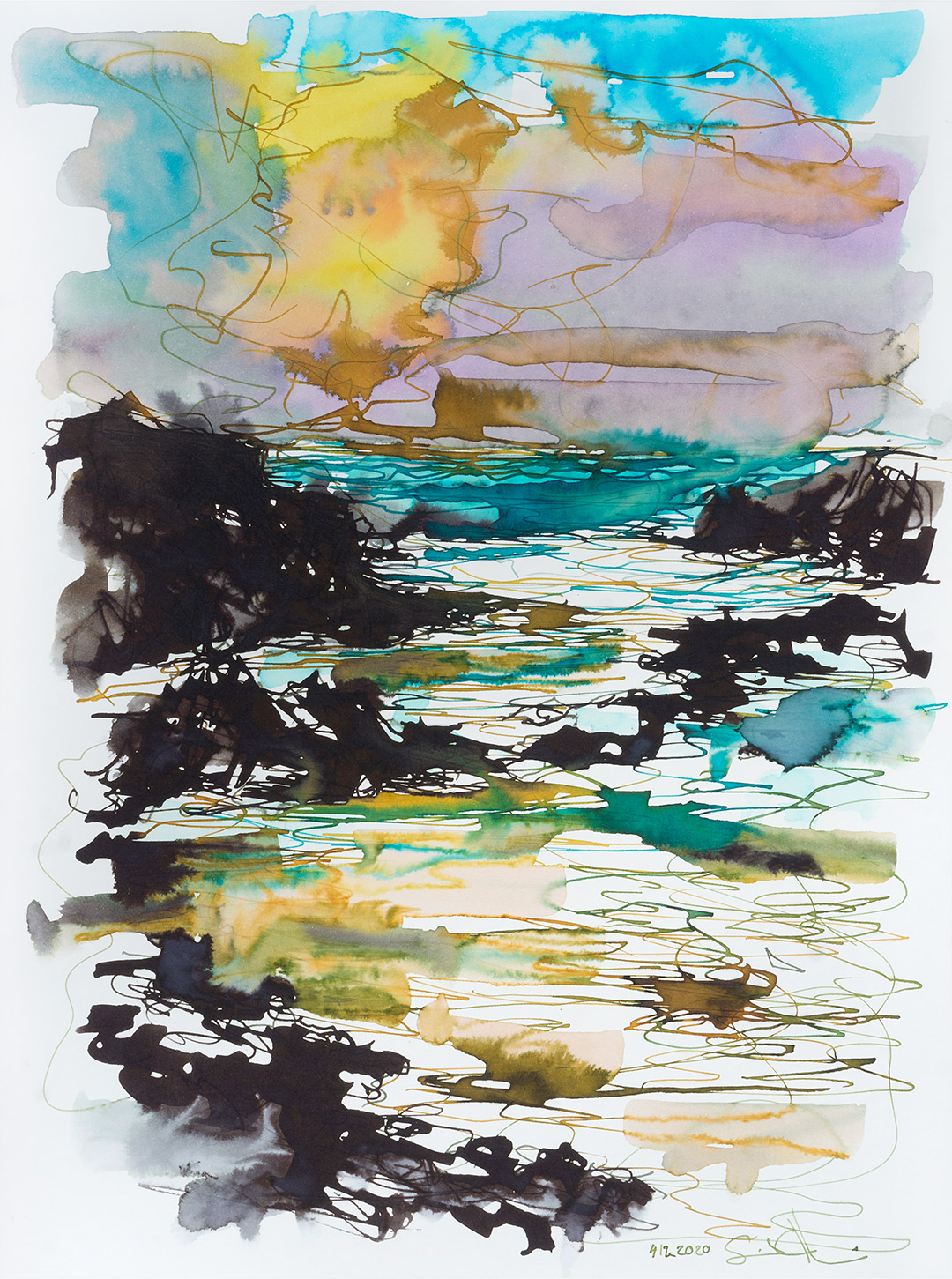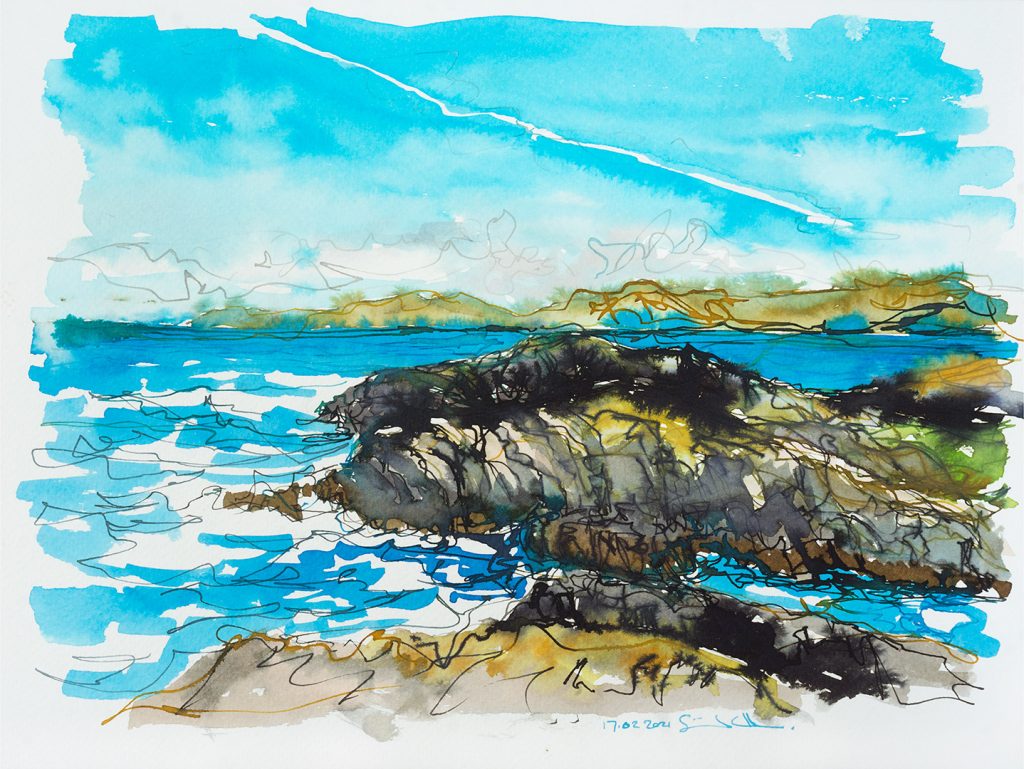In deciding to write a weekly article I have come back to some simple questions about creativity. This week the (apparently simple) question is: Why do we create?
Before I continue, I invite you to stop for a moment and consider: what drives, or draws, you to create in the world?
Some of your personal ‘whys’ might include: to make money, to express emotion and ideas, to have fun or to quench curiosity. Creativity is often perceived as part of a job, a hobby or pastime, but I believe that it is far more than that. The evidence of this can be seen when we look at what motivates us in society; what has led to our culture and collective identity.
If we trace our steps back through history, before crafts, map-makers, explorers, writers, poets, painters, sculptors, composers, the Renaissance, great fallen civilisations and on back before the first tools and cave paintings: what were the personal and collective motivators of our ancient ancestors?
Basic needs
The first reasons to create came from the necessity to meet our basic physiological needs for food, water, warmth and rest. We developed tools for hunting and gathering, we learned which plants were good to eat, and developed hunting techniques and clothing for warmth. We met our safety needs through the structure of the family unit, in the bonds between parents, children and clan. Shelter was found in caves and in simple structures created from natural materials and evolved into more permanent homes, villages, towns and cities. Meeting our basic needs for health, security and defence developed with tools, knowledge of healing plants, fire and metallurgy.
Our creativity have helped us to solve problems since the very first moment we started to gain awareness. Our creativity was ignited by problems that we observed, and our curiosity to find solutions. We observed the world around us: looking listening, tasting, smelling, touching, imitating, exploring, understanding and learning, we tried, tested, failed and retried, innovating our way for millennia.
Psychological needs
Once our basic needs were met we turned our creativity to meeting our psychological needs for belongingness and love: forming intimate relationships and friendships. We learned and explored communication, enabling new and more complex ways of connecting and living. We explored through language, poetry, song, and music, writing, drawing, celebrating, developing social skills and learning how to maintain bonds in more complex social systems.
With more sophisticated society we began to explore more personal esteem needs: to be seen and acknowledged in our community, to creatively respond to our need to express our feelings and ideas: our truth. We engaged our creativity for prestige and the feeling of accomplishment, showing respect for others and embracing their respect for us, building confidence and self-acceptance.
Self fulfilment needs
With our psychological needs met we could harness our creativity to explore our self-fulfilment needs: endeavouring to achieve our full potential. Now this is where we more often source our ‘why’. In Maslow’s hierarchy of needs and in our first world culture, creativity is perceived as a luxury of developed civilisation: part of meeting our self-fulfilment needs when all other needs are met. But our creativity has been a crucial golden thread woven through the evolution of our civilisation and laying the foundations for our capacity to meet our basic needs and weaving culture: our collective customs and beliefs.
Culture
Through creativity and innovation: hunting and gathering developed into agricultural and horticulture, security needs became martial arts, defence systems and the art of war. The first dwellings developed into villages, towns, civic buildings and the field of architecture. Healing became the great branches of the art and science of medicine globally. And we developed religious beliefs, the arts and entertainment, politics, economics, social sciences etc. We created to honour life, others, deities, powers, spirit and the elements; to pay respect to our beloved ancestors and to pray to unseen forces for abundance and health in our lives.
We create to understand, to make sense of the world and our perception of it. We create because it provides mental calm [10 Ways creativity is good for you], in response to surges of emotions we create as a way of letting off steam. Creativity has been essential in the pathway to freedom from mental turmoil and angst. We create to feel better; we create for fun joy and sheer pleasure of playing music, dancing and painting: because it feels good. We create to connect with one another now and with future generations: to entertain, to tell stories, to record our lives.
Motivators for creating have become cultural demarcations, definitions of eras in history like the ages of renaissance and reformation with our desire to revive the art, literature and learning forming 300 years that bridge between medieval times and the modern era and the age of discovery that was fed by the need to explore and conquer that ultimately led to whole new countries built on colonisation and the legacy of slavery. And we now live in the information age or the anthropocene and our creativity is interwoven in our ways of understanding the world and in daily life. The ‘Why’ behind our collective creativity is the backbone of culture.
Creativity for change
Creativity has always brought about change: positive change in the form of giving different perspectives, sharing knowledge, bringing joy, engaged to inspire social change, the raising of awareness and campaigns of liberation and freedom: to tell the truth, to campaign for our rights. And also it has been part of bringing negative change in the form of the wielding power and dominance, to coerce, confuse, obfuscate, to incite polarisation and hatred: to gain psychological and physical dominance through war.
Creativity is about making connections between apparently unrelated ideas: it’s about bringing something new into the world. It is a phenomenon to be marvelled and appreciated and not taken for granted. Our creativity is a powerful gift and equally a responsibility: it can help is meet our basic needs for survival, strengthen our social bonds or can help use continue fine-tuning destruction. So it is important to know why we create personally but also collectively: what is our current cultural ‘why’?
For the next seven generations
For most of human evolution our reasons to create were predominantly driven by extrinsic (external) needs: to survive, to defend and protect was part of the culture and psyche and every one lived, worked and created within that. This motivation to survive had far reaching ramifications: many indigenous groups made and still make decisions with the well-being of the next seven generations in mind. Their creativity was dedicated to honouring and protecting all of life in the past, present and into the future.
Although basic needs are not the huge priority they were in our distant past they remain a challenge in very many parts of the world. We are at a point in our evolution where are surrounded by personal motivational prompts that largely ignore the wellbeing of our communities let alone the wellbeing of living systems and those of coming generations. But we are living in the shadow of huge extrinsic motivators that our current growth and profit driven systems largely ignore.
We are witnessing environmental degradation, social injustice and an economic system based tragically on exponential growth. We are living in a time when we’ve never had more information and are working with modelling that is telling us that we have limits to our current growth. These unprecedented extrinsic motivators highlight our need to bring our creativity into focus in finding new solutions to meeting our very basic physiological need for regenerative food supplies, keeping our soils alive, maintaining clean water and keeping our planet at a habitable global temperature. There is much scope for reassessing how we collectively meet the basic needs of all of our global community in equitable and innovative ways.
The power in thinking about what motivates us; to understand our reasons, intentions and purpose, is that Identifying why we create will inform what we create and can recognise when we need to make different choices and use our creativity in different ways.
Fast forward through seven generations to come: if we could look back through the eyes of our descendants, what would they say about the reasons we create now. Perhaps they will see how we moved away from motivation focused on profit, growth and power and instead evolved to honour the rights of living systems and learned to work with an economic model based on meeting the needs of all within the means of the planet.
It is important to understand the motivation behind what you create and to understand the greater motivators within our current society. Simple acts of creativity can bring us joy and a sense of fulfillment. And I wonder how they would change if we changed our collective ‘why’?
We are part of weaving our current culture and our future and although it might seem like a daunting question to look at in a time when our collective motivators seem so out of whack with sustained healthy life on earth, I feel it holds the potential to fill us with inspiration, hope and courage to find our part, however small or large to play and to dedicate our creativity, for positive change and for the next seven generations.



